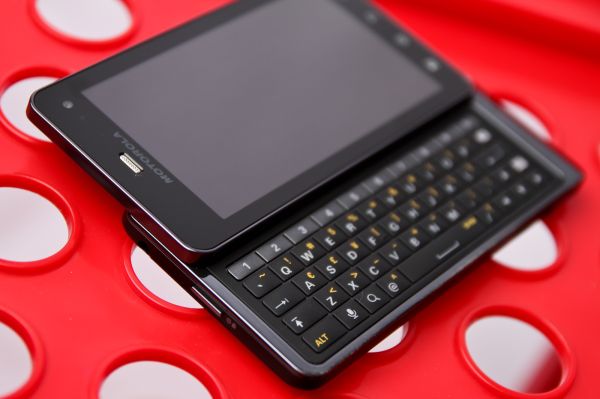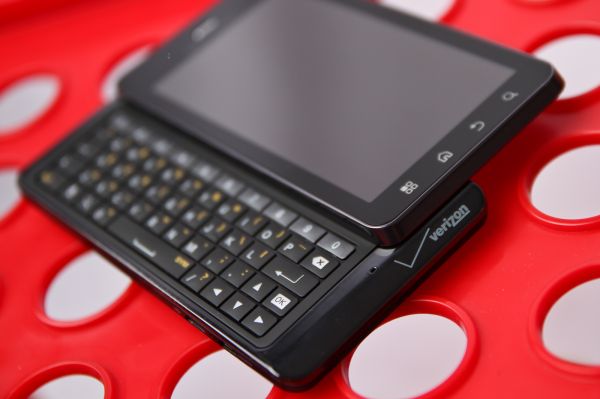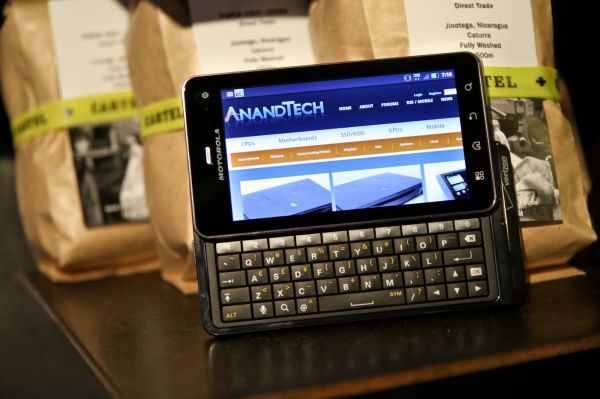Motorola Droid 3 Review - Third Time's a Charm
by Brian Klug on July 30, 2011 12:01 AM ESTConcluding Thoughts
So here we are, one year after the Droid 2, and now we have the Droid 3. Dual core smartphones are now pretty much the norm, and overall smartphone adoption shows little to no signs of slowing down anytime soon. On its own, the Droid 3 is a considerable upgrade over the Droid 2. You get a vastly better keyboard, higher resolution display, better cameras, higher resolution and better quality video recording, much better CPU and GPU performance, a better baseband with GSM/WCDMA compatibility out of the box, and Android 2.3.4. One short year later, the same price buys you a considerably better device in almost every possible category.
The problem is that there’s no LTE onboard, which seems in retrospect like a major tactical error on Motorola’s part until you consider that adding that in would likely dramatically change the Droid 3’s size and battery life. Like it or not, we’re still in the first generation of LTE modems, all of which are 45nm at present. Qualcomm’s LTE MDM9600 baseband, which is at the core of an overwhelming majority of current Verizon Wireless LTE devices, is a 45nm part and not directly voice enabled. Around mid 2012, MDM9615 will begin shipping, bringing 28nm LTE/EVDO/DC-HSPA+ connectivity in a slightly smaller, less power-hungry package, and also bringing onboard voice to bear. Only at that point (or with MSM8960 potentially sooner) and with similar parts does LTE connectivity on the device become something you can include without a complicated dual-baseband solution.
It’s roundabout, but basically what looks at first like a tactical error on Motorola’s part really isn’t - they made a design tradeoff and instead the Droid 3 is one of the thinnest (if not the thinnest) devices with a slide-out keyboard. Instead, if you want LTE and a physical keyboard, you’re going to have to wait a while until Samsung or another partner brings it to bear. That said, Motorola does have some LTE-enabled devices headed to Verizon, which we’ll look at in due time, but they likely won’t include keyboards.
If you’re in a market that Verizon hasn’t included in its official list for deployment by the end of 2011, there’s really no point to owning a first generation LTE smartphone. At that point, current devices like the Droid X2 or Droid 3 make sense, or waiting for devices based on some less power-hungry second generation basebands that will no doubt be the rage around the same time next year.
I like the Droid 3 a lot more than I thought I would going into it, just because of how much importance I personally put on having the fastest cellular connectivity. It’s sort of a running joke among friends and people that know me that I spend far too much time running speed tests, and so I went into this review ready to be underwhelmed by more EVDO slowness. I was definitely wrong about how great this device really turned out to be. Keyboard, display, OMAP4, and overall size culminate to a device that feels like way more than just an updated Droid 2.
The device has had another unintended side-effect as well. The Droid 3’s awesome keyboard has made me wish more of the Android flagship, triple-A devices had physical keyboards. Capacitive multitouch keyboards are great, but something is always going to get lost in the process of making a keyboard virtual. It’s also clear to me that developer focus has shifted away from landscape view, with so many Android applications forcing you into portrait-only mode because there’s so much more attention on portrait than landscape devices with keyboards. Maybe it’s time for a Nexus device with a keyboard to remind developers that landscape still exists.













84 Comments
View All Comments
RoninX - Sunday, July 31, 2011 - link
I'm guessing that people who prefer a physical keyboard (like myself) would rather manually correct spelling errors than deal with <a href="http://damnyouautocorrect.com/">overly aggressive autocorrect algorithms</a>.I currently have a Droid 2 on a one-year contract that's eligible for an upgrade, and I'm strongly learning toward getting a Droid 3, due largely to the excellent keyboard.
I'll have to see the Pentile screen in-person before making a decision. I find it interesting that some people find the Pentile effect imperceptible, while others find it unbearable.
I'm also curious about the Samsung <a href="http://www.bgr.com/2011/07/29/atts-sleek-samsung-s... which looks like a dual-core Exynos slider. The keyboard doesn't look nearly as good as the Droid 3's, but the 3000+ score on Quadrant (similar to the SGS2) is intriguing...
RoninX - Sunday, July 31, 2011 - link
That should read, the Samsung http://www.bgr.com/2011/07/29/atts-sleek-samsung-s...">SCH-i927 dual-core Exynos slider.hackbod - Monday, August 1, 2011 - link
Auto-correcting input from a hard keyboard is actually very different than from a soft keyboard. A soft keyboard's auto correction is deeply tied to the key layout, and tables built to map specific tap positions on the keyboard to the possible letters that may be intended.The Android IME architecture *does* allow the IME to perform the same kinds of text processing operations on physical keyboard input as it does on touch input. However, in practice, a soft keyboard IME is designed around processing touch input, and you probably wouldn't want it to do the same processing of hard key input because the result would be poor.
jvchapman - Saturday, July 30, 2011 - link
No 4G = Useless.bjacobson - Saturday, July 30, 2011 - link
looks like the display is still sunken down under the gorilla glass like on the Droid1 and Droid2? The more I use others' phones (Samsung Galaxy, Iphone, etc) the more it bugs me on mine...significantly increases glare.bjacobson - Saturday, July 30, 2011 - link
The dragging down notifications bar animation, on all the OMAP based phones I played with, runs at 20-30 FPS best case.The Samsung Galaxy animation for it is much smoother for whatever reason.
This is the biggest beef I have with android phones; I play with my friend's Iphone 3gs and it's still smoother than the latest android hardware...
Mumrik - Saturday, July 30, 2011 - link
I really don't get why we have to have those sucky touch buttons under the screen when they could be proper physical buttons.Myrandex - Monday, August 1, 2011 - link
I agree. I miss call start and end buttons personally.Jason Cook
anandtech pirate - Saturday, July 30, 2011 - link
only 512mb of ram? I'm sure throwing in another 512mb wouldn't have added much to the cost. and I bet the performance boost would have been worth it.also..... whatever happened to the evo3D review?.... just wondering like a lot of other people
tipoo - Saturday, July 30, 2011 - link
Does anything indicate 512MB currently bottlenecks Android or its apps? We just moved away from 256MB not so long ago, after all.